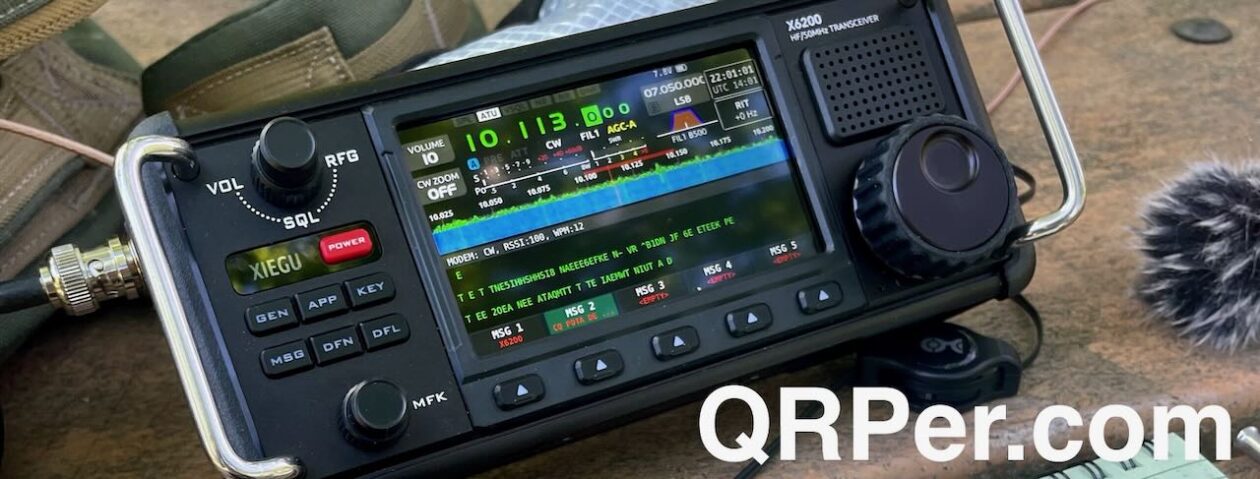Many thanks to Greg (KJ6ER) who shares a post he originally published on Facebook regarding his first ever QRP SSB POTA activation. This post is just as much a break down of his field kit, so we’re also including it in our Field Radio Kit Gallery.
My First POTA QRP SSB Activation
by Greg (KJ6ER)
Wooo hooo! After 700 QRO SSB POTA activations in California over the past 2 years, I decided to try my first 10-watt QRP SSB activation from K-3473 in San Jose. To my pleasant surprise, it was very successful: 121 SSB QSOs in 4 bands (10, 12, 15 and 17M) across 5 countries including DX to Japan, Alaska and Argentina. I worked 34 U.S. states and 5 Canadian provinces. I operated a total of 4 hours, averaging a QRP QSO every 2 minutes. Lesson learned: Inspired by my QRP mentor Kevin Behn, QRP is not only as fun as QRO (when the bands are working) but it is simpler and faster to deploy. And I can wear the entire station on my back!
My QRP shack-in-a-pack is the ICOM IC-705 (in an ICOM backpack) with a 7M Spiderbeam fiberglass telescoping pole and my homebrew resonant halfwave monoband antennas. Quite frankly, a significant contributor to my success was the monoband resonant halfwave antenna: low angle of radiation and more gain than a typical quarterwave with radials. I modeled this after my homebrew POTA Dominator resonant halfwave antenna. If you’re interested in more detailed information about this antenna and components in my backpack, take a look at each photo with descriptions (below).
Starting on 10M, I was planning to work my way down the HF bands to 20M where I assumed would get me the most QSOs and help me officially activate.
Well … I never made it to 20M: by band, 24 QSOs on 10M, 13 QSOs on 12M, 32 QSOs on 15M and 52 QSOs on 17M = 121 QSOs! I will plan to do a 20 and 40M QRP activation soon, as well as 2M and 70cm since the IC-705 supports those bands, too.
Many thanks to all the hunters who helped me complete my first QRP activation! While I certainly did not experience any massive pile-ups like my typical QRO activations, the slower pace QRP activation made it very relaxing. I strongly recommend it! Feel free to let me know if you have any questions, I’d be happy to help 72 KJ6ER, San Jose
Field Kit Details

The ICOM IC-705 running 10 watts off a 3Ah Bioenno battery. Just to the right of the pack in the field is my 7M Spiderbeam fiberglass telescoping pole supporting monoband resonant halfwave wire antennas for 10M, 12M and 15M. I also use the pole to operate on 17M and 20M as a sloper or inverted-V, and 40M as an inverted-V. I love how fast I can get operating with just a backpack and telescoping pole!

I thought I would need 20M to activate but the uppers bands worked so well, I never got there. I completed my activation in 4 hours and averaged about 1 QRP QSO every 2 minutes. While I was not getting my usual 5-9 QRO signal reports, I was heard clearly on the low noise upper bands with my QRP SSB signal.
 The 7M Spiderbeam fiberglass telescoping pole supports my monoband halfwave vertical wire antennas for 10M, 12M and 15M, as well as 17M and 20M when used as a sloper or inverted-V. I also use it as a center mast for my 40M inverted-V. Continue reading Greg discovers the joy of QRP in his first QRP SSB POTA activation
The 7M Spiderbeam fiberglass telescoping pole supports my monoband halfwave vertical wire antennas for 10M, 12M and 15M, as well as 17M and 20M when used as a sloper or inverted-V. I also use it as a center mast for my 40M inverted-V. Continue reading Greg discovers the joy of QRP in his first QRP SSB POTA activation






















 I had just enough of my portable kit with me to make this happen.
I had just enough of my portable kit with me to make this happen.
















